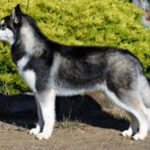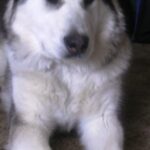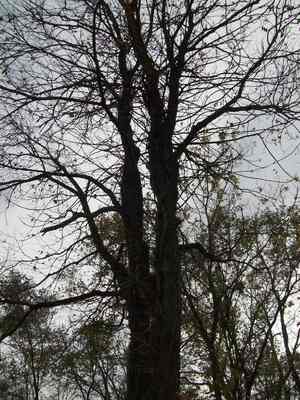The dogs are waiting at the kennel. They are eager to join the team that will run in that next big Iditarod, the greatest race on earth. Every musher has learned the lingo that belongs to the world of sled dog racing.
Types of Sled Dogs
1. Siberian Huskies: purebred Siberian breed of medium sized dogs primarily used for pulling sleds
2. Samoyed: purebred Siberian breed of medium sized dogs that herd reindeer and are great for pulling sleds
3. Malamute: the only purebred native Alaskan dog
4. Alaskan husky: mixed breed dog that is considered the fastest sled dog in the world
Terms for Dogs at the Kennel
1. Gang hitch: an anchor for the dogs located outside the kennel
2. Gang line: dogs lined up in their team positions
3. Lead dogs: the front dogs in a gang line
4. Swing dogs: dogs lined up behind the lead dogs to help turn the sled
5. Team dogs: dogs lined up behind the swing dogs to pull the sled
6. Wheel dogs: dogs lined up directly in front of the sled to help steer
Commands Mushers Call to the Team
1. No: Poor behavior from dogs is reprimanded with a firm “No.
2. Hike: This command tells the team to start moving.
3. Let’s go: This command is interchangeable with “Hike.”
4. Gee: Dogs know to turn right when they hear this command.
5. Haw: Dogs know to turn left when the musher calls, “Haw.”
6. All right: The sled team will speed up when they hear this.
7. Easy: The dogs know to slow down when they hear this.
8. Whoa: This is the command to make the team brake and stop.
Out on the Trail
1. Break trail: the first team told to push off in a race
2. Push off: the action the team takes to begin the race
3. Sled basket: carries handlers and injured animals behind the sled
4. Dropped dog: a dog that is unable to finish the race due to injury or illness
5. Booties: required footwear for the dogs to prevent injury during a race
6. Berm: narrow ledge at the path’s edge left by snow machine
7. Rabbit: the leading musher in a race
8. Head lamp: a lamp used as a reflector on the helmet of the musher during the race, helps musher keep track of the front of the sled, especially in poor weather
9. Paint markers: each team has a different color painted on the dog for identification from veterinarians and race officials
10. Checkpoints: stopping points along the trail, where dogs and mushers are checked for safety purposes.
11. Markers: These are 4 foot high posts that are painted fluorescent orange. Twelve of these are set up to a mile to help teams keep track of the trail.
12. Hazards: things that may cause difficulty or are dangerous
13. Iron dogs: snow machines that keep the trail clear for racers
14. Widow’s lamp: This is a lantern that stays lit until all teams have reached their destination. When the widow’s lamp is extinguished, the race is over.
15. Tundra: a great open plain, the Eskimo word for “nothing”
16. Sea ice: a layer of ice that floats on the surface of the ocean
Terms of the Trade
1. Sprints: short distance speed races to prepare for the Iditarod
2. *Fur Rendezvous Festival & World Championship Sled Dog Race: a 3 day event hosting sprint races in Anchorage, Alaska
3. *Yukon Quest: a long distance race of 1,000 miles spanning from Fairbanks, Alaska to White Horse, Yukon Territory, Canada
4. *Both of these events are important in preparing for the Iditarod.
5. Cachet: officially stamped envelope that mushers are required to carry on their person, used to raise funds for future races when autographed and auctioned at the end of the race
The Organization
1. Race Marshal: assigns judges to locations where they will watch for safety issues, and be alert for missing teams
2. Race Manager: oversees all the details of the race to make sure everything runs smoothly
3. Sponsors: help fund individual teams so they can afford to participate in the race
4. Veterinarians: animal doctors who care for the dogs
5. Handlers: help with training and managing the dogs
6. Volunteers: do anything and everything, including flying airplanes to help transport officials, dogs, and other volunteers
7. Iditarod Air Force: the official air transportation, run by volunteers to transport people and animals as necessary during a race
Awards and Recognition in the Iditarod
1. Alascom Award: received at the official half way point of the race, specially minted silver ingots worth $3000.00
2. First Musher to the Yukon Award: receives a 7 course meal, night in a hotel, generous purse, and a gold pan trophy
3. Timberland Company’s Spirit of the Iditarod Award: a cut crystal trophy given to the person who demonstrated courage, compassion, perseverance, and respect for the wilderness
4. Seppala Humanitarian Award: crystal trophy for the musher who treated the sled team the most humanely
5. Red Lantern Award: given to the person who comes in last, in honor of their perseverance
6. Purse: $25,000 to $50,000 in prize money given to the person who comes in first, along with a new truck, and other
7. Golden Harness Award: given to the most outstanding lead dog, with a lei of flowers placed around his neck
Sled dog racing has a language of its own. Mushers handle the dogs using commands that have worked for decades. They become a part of the organization that helps their sport advance. This organization works to honor the past, while conquering the future. There is a sense of pride and respect that creates a common bond for those who understand and believe. There is a sense of awe and mystery, for those who can only dream of racing in the Great Race of Mercy, the Iditarod.




